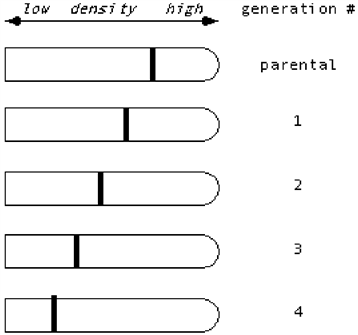Multiple Choice
Suppose Meselson & Stahl had observed the following data in their famous experiment involving a switch from medium containing 15N to 14N. What would they have concluded about the nature of DNA replication? 
A) They still would have concluded that DNA replication is semiconservative, i.e., each double helix contains one parental strand and one newly synthesized strand.
B) They would have concluded that DNA replication is conservative, i.e., one double helix contains only the parental strands, while the other contains only newly synthesized DNA.
C) They would have concluded that DNA replication is dispersive\random, i.e., each strand of each double helix contains a mixture of parental and newly synthesized sequences.
D) They would have been unable to distinguish which is correct.
Correct Answer:

Verified
Correct Answer:
Verified
Q27: One major difficulty in replicating linear DNA
Q28: The direction of synthesis of a DNA
Q29: Since DNA Polymerase II has endonuclease activity,
Q30: In the synthesis of DNA in Escherichia
Q31: It is so important to keep the
Q33: What is the requirement for a template
Q34: Which of the following describes a difference
Q35: The universal features of DNA replication include
Q36: DNA repair mechanisms are essentially the same
Q37: _ is an enzyme that introduces